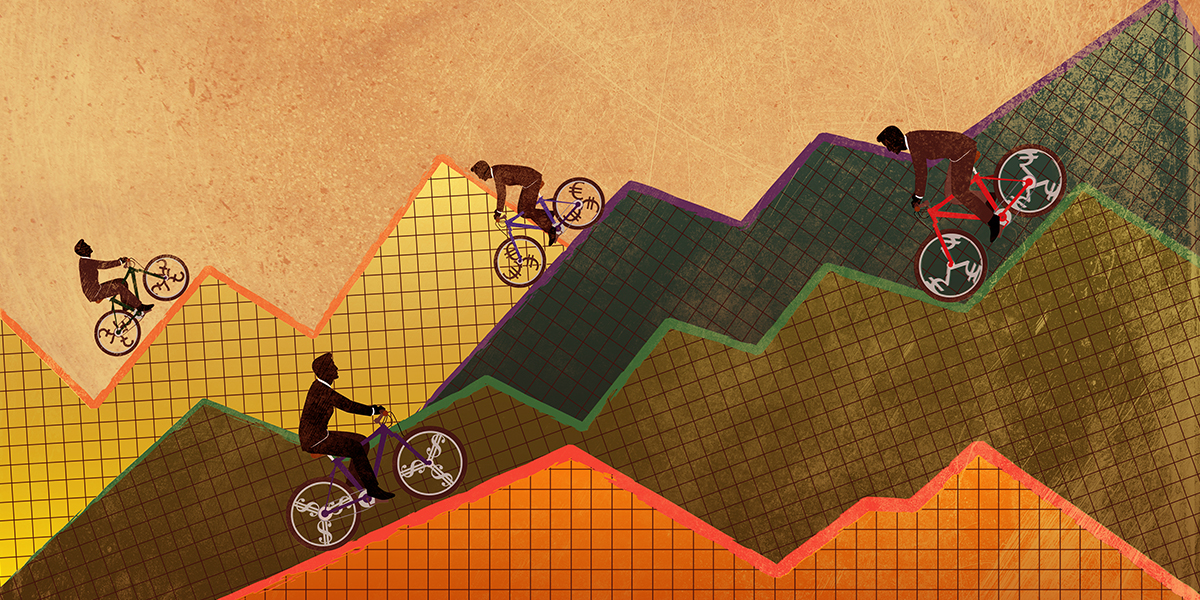If we want to live up to the admirable ambition from both corporations and governments of achieving the target of net zero carbon emissions, we have a long way to go, and we need to get a move on.
BP’s research shows that to replace fossil fuels and get their usage to zero between now and 2050, we have to build one nuclear power plant per day, or 1,500 2.5-megawatt wind turbines a day.1
That is every single day. And we had better hope it is windy if we opt for wind turbines!
Clearly there is a major problem here - not only with our ability to achieve this rate of production, but simply having the raw materials to do so.
This is an extreme equation, and undoubtedly, based on what we know and understand today, we will have to use some fossil fuels in the future. From a societal perspective, achieving net zero emissions is a vital ambition. While the end goal is often well articulated, what is not so clear is how we get there.
It is this challenge that we seek to consider in this article.
The path to zero may be uncomfortable
The obvious and simple answer is to stop and redirect. That is, stop doing those things that are harmful and redirect that activity or demand to something that delivers a positive contribution. This looks like a neat and simple solution, although unfortunately, it ignores the reality of today’s physical boundaries and crucially, the confronting question of maintaining our standard of living.
There is a path that needs to be followed in order to attain net zero emissions, but what is confronting is that this path may seem to take us backwards in order to achieve our goal. A simple trajectory of linear improvement ignores that we have neither the required resources or technology to achieve the goal of net zero. If we did, theoretically, we could make the switch much faster than 2050. Yes, that would be disruptive, but achievable. Absent of this technology and resources, we are left with the necessity for very significant investment to get there, teleportation to net zero carbon emissions is simply not an option.
While this is not new, it does require a radical rethink to what many well-meaning ESG funds are doing. The current ESG investor response to achieving net zero emissions is the removal of all capital from fossil fuels (to make our world instantly a better place) through exclusionary screening, making Elon Musk’s human occupation of Mars seem plausible today.
We are not saying that none of the above/below is unknown, but the rhetoric needs to go beyond the headlines, into the reality of making it happen.
What are the known highlights focused on today? These are obvious. They include: additional alternative energy sources; the reduction in the obvious sources of harm (those most frequently cleansed from portfolio); and other big picture items.
For the transition to occur there are a range of obvious and high-profile actions, which can be implemented immediately using today’s infrastructure, technology and knowledge. All of which need funding, incentives and potentially some form of punishment for non-adherence.
Infrastructure investment is required across wind turbines, solar farms, geothermal power stations, grid upgrades, charging stations, storage facilities and recycling plants, just to name a few that can be reeled off with ease. We know from experience that without these developments there is no alternative generation or transmission to replace existing facilities.
This is also a technological requirement. Technologies, some of which exist today but in many instances are not yet fully formed, and others which don’t yet exist. The replacement of the internal combustion engine is a good example; not only is there no clear single accepted battery technology solution yet, it is not even clear batteries are the way to go. The chemistry composition of the end battery form will evolve and we may ultimately have a clear winner. But like the VHS victory over Betamax, this could be a short-won glory, as DVDs powered through only to be superseded by digital streaming. Cobalt/lithium and solid-state batteries face stiff competition from hydrogen. This specific debate is one for another time, however, the observation we wish to make is that there is radical technological innovation occurring now and it is one that will, and needs to, continue evolving into the future. This development requirement sits across the whole spectrum of carbon emission reduction.
But what is not generally being talked about at length?
There are two broad areas not being discussed in detail: Firstly, the path that needs to be taken (although we recognise this is starting to change); and secondly, the component parts required to enable this to happen. This is a much wider set of tools than is frequently cited. Copper is held out as one example of a darling ‘poster child’ of electrification (by this positive affirmation I refer to the existence of copper not the actual extraction and refinement – both of which are ‘abhorrent’ to the ‘green today mentality’, as is also the case for cobalt and lithium required for storage). However, little thought is given to the ‘dark child’ of steel, other than to acknowledge it is an industry with terrible ESG credentials. But for copper to deliver on its potential, it will frequently need to be encased and held up by something. That ‘something’, based on current abilities, is steel. Steel is an unavoidable requirement, making it the enfant terrible of ESG.
What are the implications?
Primarily, the cease and desist tactic is not an option. This approach would result in catastrophic outcomes for society. We would essentially see widespread deprivation of Maslow’s basic needs. Imagine the destruction of food security, energy security, shelter, mobility constraint and erosion of healthcare. In such an environment, basic human instinct, the selfish desire to survive, would lead to widespread rejection of longer-term concerns. As we have seen in riots in recent years, even in the UK, US and mainland Europe, there is only a thin veneer of civilisation. This is not a viable option. The removal of bad operators is appealing, but the reform of them is much better.
If you accept the above, it is not much of a stretch to understand where this takes us: the investment required to achieve these goals. As confronting as it seems, the investment required into these areas will appear to take us backwards! Peak emissions (and investment into carbon-emitting industries) are ahead of us, not behind us.
Below is a chart compiled by the UK Climate Change Committee showing a high-level picture of investments and savings required by 2050 in the UK alone. One can extrapolate this out for the rest of the world.
UK Balanced Pathway Investment and Savings
Source: UK Climate Change Committee: Council investment requirements - the numbers behind the 1 February 2021 budget.
Current mine production of copper is 20 million metric tonnes (mt) p.a.2 We already use 24.4 million mt p.a., and the planned additional 650 gigawatt (GW) of new onshore and 130 GW of offshore wind power will use 5.5mt of copper alone3 – this equation does not work, and will result in a significant shortfall in copper supply.
The implication is that the transition to net zero emissions has many facets. Importantly, they are not necessarily mutually exclusive of each other. Yes, the obvious place to start is to support those businesses that are achieving good outcomes. However, to be part of a long-term constructive solution, the business has to have a real prospect of being a sustainable business model, that is both advancing the path to net zero carbon emissions while at the same time having commercial value.
Secondly, there is the imperative for technological uplift and the accompanying research and design required to develop suitable solutions across a whole range of industries. While we are immediately drawn to new, disruptive companies developing novel and exciting technology, it is also linked to the ‘bad’ making themselves better. For the foreseeable future, air travel will be a detractor to targeting net zero emissions. But improvements in the industry can be generated that contribute to the task at hand. We can also consider fertiliser companies. Clearly it is an imperative to continue to feed the world’s 7.8 billion population.4 Without fertilisers we have no hope of doing this. However, the mining of phosphates is not pretty from an environmental perspective. The alternative, however, is more devastating and likely to see a rapid erosion of society. While slightly out of scope for this article, this point reminds us that we need to consider, in a balanced manner, the overall contribution the company makes to society’s ESG objective. Our responsibility as an investment manager is to engage with companies to help them understand this link and encourage their improvement.
Lastly, there are the component parts, without which, nothing can occur. They may not at first glance be obvious, as already acknowledged we will need copper and steel, but we will also need the computer systems, semiconductors and all other manner of requirements, the breadth of which is staggering. Without these enablers we will achieve nothing.
Reflecting on the above draws one to the realisation that there is a strong industrial undertone to achieving net zero emissions. The solutions are from a much wider range of industries than the high-profile energy and transportation sectors. Ultimately, we need to seek those that have a common consideration: how are they contributing to improvement as a result of their actions?
Conclusion
In the (recreational) nautical world there are two firm camps: motor yachties and sailors. The motor advocates are about the destination and floating around in idyllic utopia. The boat is merely the method of delivery. Sailors, indeed, have the same end goal, but the path and the journey is the real joy. Transition (to net zero carbon) is the sail boat. It is about how we get there as much as the destination.
1 Source: Rodger Pielke Jr., BP 2018.
2 https://www.statista.com/topics/1409/copper/
3 https://copper.com.au/news/general/worlds-wind-turbines-drive-copper/
4 https://www.census.gov/popclock/world
DISCLAIMER: This article has been prepared by Platinum Investment Management Limited ABN 25 063 565 006, AFSL 221935, trading as Platinum Asset Management (“Platinum”).
While the information in this article has been prepared in good faith and with reasonable care, no representation or warranty, express or implied, is made as to the accuracy, adequacy or reliability of any statements, estimates, opinions or other information contained in the articles, and to the extent permitted by law, no liability is accepted by any company of the Platinum Group® or their directors, officers or employees for any loss or damage as a result of any reliance on this information.
Commentary reflects Platinum’s views and beliefs at the time of preparation, which are subject to change without notice. Commentary may also contain forward-looking statements. These forward-looking statements have been made based upon Platinum’s expectations and beliefs. No assurance is given that future developments will be in accordance with Platinum’s expectations. Actual outcomes could differ materially from those expected by Platinum.
The information presented in this article is general information only and not intended to be financial product advice. It has not been prepared taking into account any particular investor’s or class of investors’ investment objectives, financial situation or needs, and should not be used as the basis for making investment, financial or other decisions. You should obtain professional advice prior to making any investment decision.



